Elna Carrasco
This user hasn't shared any biographical information
Posts by Elna Carrasco
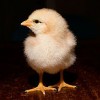
Just a Cluck Away from E. coli
Mar 5th
1 day-old chick
When people hear the name E. coli, even a passing familiarity brings about reactions of disgust and fear of food poisoning. This outright hatred of the common bacteria is, perhaps, a bit unwarranted, considering there are many different types of Escherichia coli. Not only are there harmful strains, but there are also many that are harmless to humans and some that are even helpful as well. We actually have our own E. coli that live in our intestines, take some of our nutrients and make essential vitamin K2 for us, which we cannot make for ourselves. Vitamin K is More >

Be nice to your plants, they might be sensing you
Jan 4th
Complex social behavior was considered to be unique in animals, especially humans. Now with recent findings, we may need to extend this ability to plants. The old wives tale, “if you talk to your plants, they will grow better” may actually have a string of truth to it. Except they don’t have ears to hear, they have chemical sensors in their roots, like “tongues in the earth.”
Recent studies have shown that plants seem to respond to other neighboring plants, and will alter their growth patterns accordingly. At McMaster University, Ontario Canada, Susan Dudley and Amanda File have demonstrated that plants More >
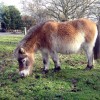
Ancient cave paintings, fact or fiction? Prehistoric Horse DNA Holds the Key
Nov 29th
Pony with Pangare markings
Before the dawn of the written language, prehistoric humans began recording events from their daily lives and environment on the walls of their local caves. Now many of these cave paintings are treasured, priceless works of ancient history and art. Many different animals are represented in these paintings and about a third of them are horses. [1]
There has been much speculation about exactly which horse breeds existed when the painting of cave walls began about 25,000 years ago. Some of the types predicted included bays, grays and horses with dun colored coats with pangaré markings (tan coat with More >
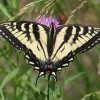
The Secrets of Butterflies
Nov 8th
Butterflies are a timeless symbol of beauty and serenity, with their sweet graceful fluttering is enjoyed by people around the globe. But to “non-people,” or hungry animals, they are more often a source of food. Butterflies have almost no chance against birds and other faster predators. They tend to be slow flyers and many have vibrant colors that stand out in contrast to the flowers they choose to collect nectar from.
So why have they not succumbed to the pressures of natural selection? They are much tougher than they appear. Butterflies have three dominant defense mechanisms that have kept them safe More >

Glow Kitties for Disease Resistance
Oct 5th
Who would have known that a little glowing jellyfish would come to mean so much? In the 60’s and 70’s a Japanese scientist named Osamu Shimomura isolated a protein from the pacific jellyfish (Aequorea Victoria) that allowed the jellyfish to glow. This cylinder-shaped protein is now called Green Fluorescent Protein or “GFP.” Shimomura also uncovered the part of the GFP molecule that was responsible for its fluorescence. After this initial discovery, other researchers began to show an interest in the little glowing molecule, especially, Martin Chalfie and Roger Tsien.
Martin Chalfie began attaching GFP to gene promoters, hoping that GFP would More >
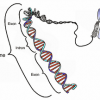
Whole Genome Sequencing: Mutation Diagnosis of the Future!?
Mar 19th
Two Scientific teams independently attempted a new approach to discovering the cause for certain diseases by sequencing the whole genome of their patients. This technique was done not only to help their current patients but hopefully to shed light on other common killers such as heart disease, diabetes and Alzheimer’s.
One Scientist from Baylor College of Medicine in Houston Texas, Richard A. Gibbs, decided to test whole genome sequencing on his colleague, a medical geneticist, Dr. James R. Lupski, who suffers from a rare genetic disorder known as Charcot-Marie-Tooth Neuropathy (this disease damages nerves to the hands and feet and causes More >
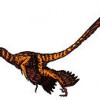
Could Jurassic Park have been right?: Venomous Dinos
Jan 28th
65 million years ago one of the most amazing and dynamic groups of organisms vanished from our planet, the Dinosaurs. All that remains are fossil records with gaping holes and missing data.
Only recently has science began to unveil some of the mysteries of these behemoths. For decades it was believed that ancient DNA, proteins, and soft tissue could not be preserved over millions of years. Now, during the last 2 years, soft tissue was discovered deep inside the thigh bones of T-Rex.
There are times that inspiration for truth comes from science fiction, such as the best selling novel and blockbuster More >
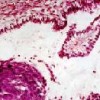
Genetic Codes for Skin and Lung Cancer have been Busted!
Dec 22nd
“Cancer is a leading cause of death worldwide and claims more than 7 million lives each year according to the World Health Organization.”
Cancer cells have mutations in their genes that render them unable to respond to signals that regulate cell division. These cells grow uncontrollably and can invade normal tissue in other locations of the body and cause disrupted functions of major organs. This is why cancer is so deadly.
A mutagen is a physical or chemical substance that can alter genetic material in cells. DNA can be damaged or changed (mutated). Cancer cells have changes in the genes themselves. These changes More >

The new "oldest" member to our hominid family tree
Nov 9th
During an anthropological expedition in 1992 to the Middle Awash river valley in Ethiopia, a research team led by Tim White uncovered a fascinating, previously unknown fossil Hominid. In 1994, the fossil was named Ardipithecus ramidus. In the Afar language, “Ardi” means ground floor and “ramid” means root.
Affectionately known as “Ardi”, some of her features were distinctive. Due to her location in the ancient Ethiopian strata, she was dated to 4.4 million years ago, pre-dating “Lucy” (Australopithecus afarensis) by over a million years. Her brain size was much smaller than Lucy’s but was similar to that of a modern chimpanzee. More >
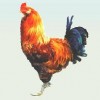
Chikafrogonewtasaurus
Sep 4th
Being an educator at the DNALC does not mean that everything has to be all “DNA”! Sometimes, it’s all about proteins. My background is in ecology and evolution, with a particular bent towards dinosaurs. In 2005, dinosaur paleontologists decided to slice the leg bone of a 68 million year old Tyrannosaurus rex, just to see what it looked like inside. They were in for a surprise. There were remnants of soft tissue – still present after 68 million years!!
In 2007, they were able to identify and compare seven protein sequences. Three of these proteins seemed to be closely related to chickens. More >
